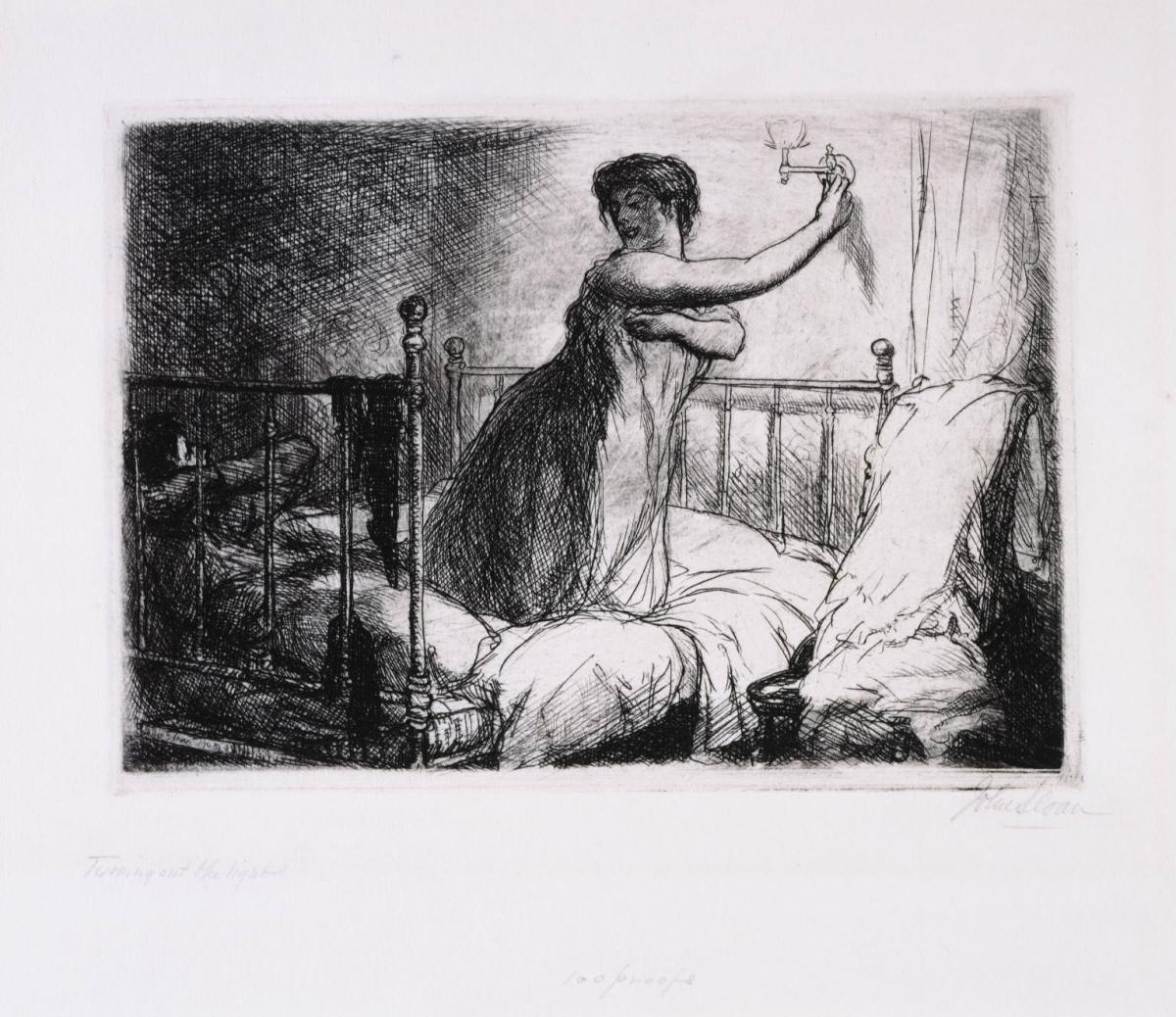Turning Out the Light
John Sloan ( 1905 )

In 1905, John Sloan wrote to his wife, Dolly, saying that he had spent the better part of a day working on a plate of a woman turning out a bedroom light. The image is of just that: a woman, kneeling on her bed, with her hand extended to turn out the lamp. Though a black and white etching, Sloan has convincingly conveyed the bright light of what appears to be a gas lamp; the room behind her is almost entirely in shadow. Sloan’s masterful technique of chiaroscuro–strong contrast between light and dark—conveys a sense of depth as well as drama, juxtaposing the bright light against the harsh darkness of night.
Notable art critic Russell Sturgis remarked about Sloan’s etching in 1906 that it was “charming.” However, on a whole he was not impressed and remarked that “New York life could be best expressed in words.” Sloan had a different opinion and in response to Sturgis, he gifted him a set of etchings. Sturgis returned the “too costly gift,” keeping only Turning Out the Lights as that was the one plate he admired.